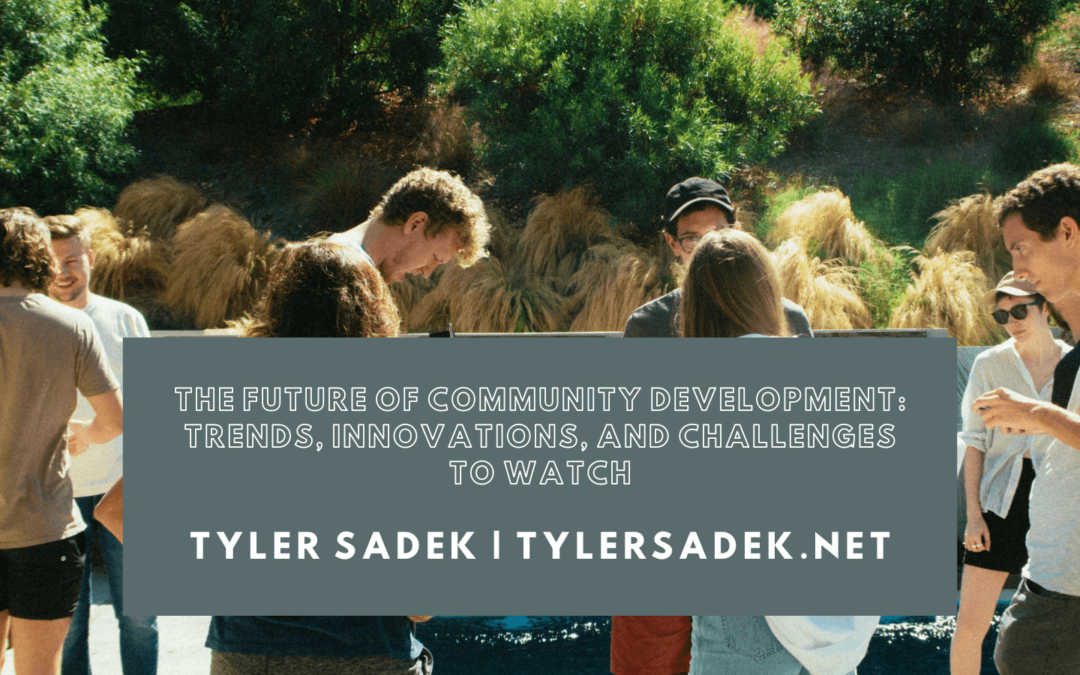Community development plays a crucial role in shaping the future of societies, fostering collaboration, and addressing local challenges. As we navigate the complexities of a rapidly changing world, it is important to examine the emerging trends, innovations, and challenges that will shape the future of community development.
1. Sustainable and Resilient Communities
One of the key trends in community development is the focus on sustainability and resilience. As climate change and environmental issues continue to pose significant challenges, there is a growing emphasis on creating communities that are environmentally friendly and able to withstand and recover from shocks and stresses. This includes implementing renewable energy solutions, promoting sustainable infrastructure, and fostering eco-friendly practices in housing and transportation.
2. Technology and Digital Connectivity
Technology is revolutionizing the way we live, work, and connect with one another, and community development is no exception. The increasing availability of high-speed internet, the rise of smart cities, and the use of digital platforms for communication and engagement are transforming how communities function. From online community platforms to digital tools for civic participation and decision-making, technology is enhancing connectivity, collaboration, and citizen engagement.
3. Inclusive and Equitable Development
Inclusivity and equity are gaining prominence as essential aspects of community development. There is a growing recognition that communities thrive when all members have equal access to opportunities and resources. Community development efforts focus on addressing systemic inequalities, promoting diversity, and ensuring that marginalized groups have a voice in decision-making processes. Embracing inclusive practices fosters social cohesion, reduces disparities, and creates stronger and more vibrant communities.
4. Collaboration and Cross-Sector Partnerships
The future of community development lies in collaboration and cross-sector partnerships. Recognizing that complex challenges require diverse expertise, stakeholders from various sectors are coming together to work towards common goals. These partnerships may involve collaboration between government agencies, nonprofits, businesses, educational institutions, and community organizations. By leveraging the strengths and resources of multiple sectors, communities can drive impactful change and achieve sustainable development.
5. Data-Driven Decision Making
The availability of data and the ability to analyze it effectively are transforming community development practices. Data-driven decision making allows community leaders to understand the needs and preferences of residents, identify trends, and measure the impact of interventions. By harnessing the power of data analytics, communities can make informed decisions, allocate resources more efficiently, and monitor progress toward their development goals.
6. Addressing Affordable Housing and Homelessness
The shortage of affordable housing and the issue of homelessness are significant challenges faced by many communities. The future of community development requires innovative approaches to address these issues. This includes exploring alternative housing models, promoting mixed-income neighborhoods, implementing supportive housing initiatives, and investing in programs that provide assistance to individuals and families facing homelessness. Solving the affordable housing crisis is essential for creating sustainable and inclusive communities.
Challenges to Overcome
While there are promising trends and innovations in community development, there are also challenges that need to be addressed. These include:
- Funding Constraints: Limited financial resources can hinder the implementation of community development projects and initiatives. Finding sustainable funding models and attracting investments are critical for driving meaningful change.
- Engaging Marginalized Communities: Ensuring that all community members, especially those who are marginalized or historically excluded, have a voice and are actively involved in decision-making processes can be a challenge. Efforts must be made to bridge the participation gap and create inclusive platforms for engagement.
- Balancing Growth and Preservation: As communities grow and develop, there is a need to strike a balance between economic progress and preserving the cultural and historical heritage of the community. Managing growth while maintaining the unique identity of a community is a delicate task.
The future of community development holds immense potential for positive change. It is important to navigate the challenges of funding, inclusive engagement, and balancing growth to ensure that the future of community development is equitable, sustainable, and prosperous for all.

